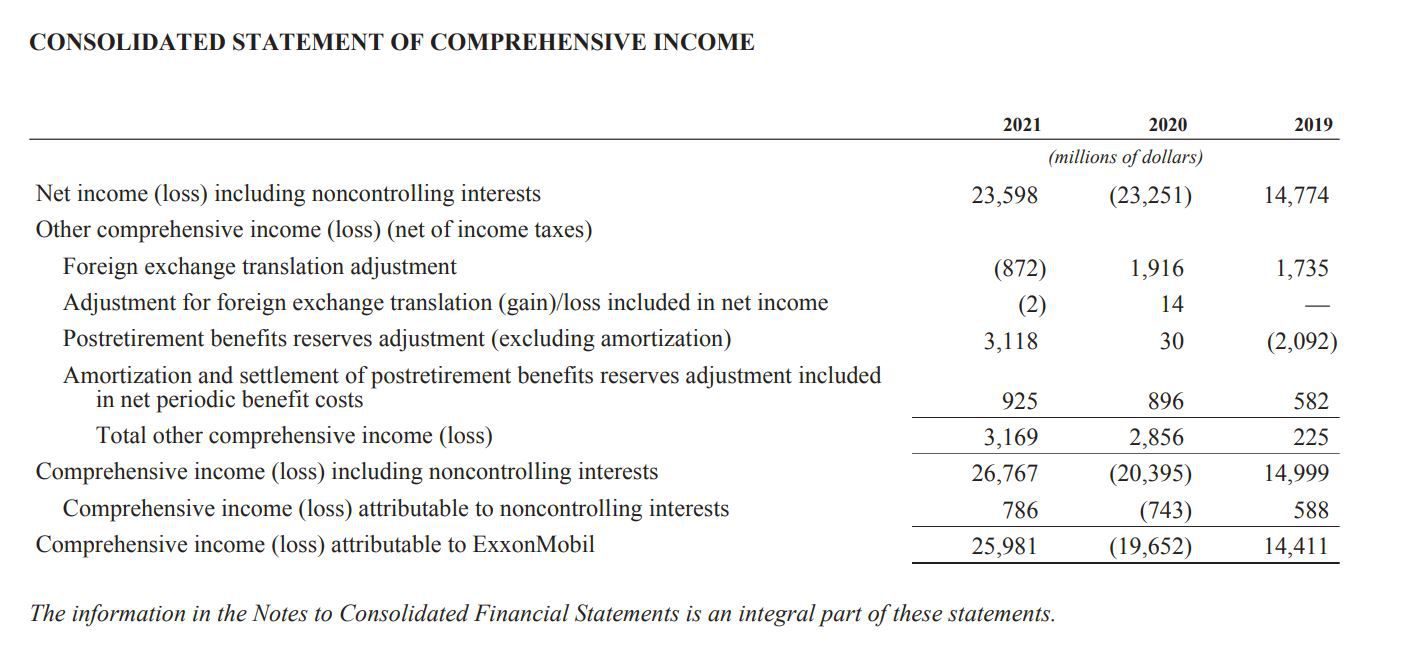

Finance
What Is Business Financial Planning
Published: November 2, 2023
Discover the importance of business financial planning and how it can optimize your finances. Gain insights into finance strategies and maximize profitability.
(Many of the links in this article redirect to a specific reviewed product. Your purchase of these products through affiliate links helps to generate commission for LiveWell, at no extra cost. Learn more)
Table of Contents
- Introduction
- Definition of Business Financial Planning
- Importance of Business Financial Planning
- Steps in Business Financial Planning
- Components of Business Financial Planning
- Benefits of Business Financial Planning
- Challenges in Business Financial Planning
- Considerations in Business Financial Planning
- Conclusion
Introduction
Welcome to our comprehensive guide on business financial planning. In today’s fast-paced and competitive business landscape, having a solid financial plan is crucial for the success and sustainability of any organization. Whether you are a small start-up or a large corporation, effectively managing your finances is a key factor in achieving profitability, growth, and long-term stability.
Financial planning for businesses involves analyzing the company’s current financial situation, setting realistic financial goals, and developing strategies to achieve those goals. It encompasses various aspects such as budgeting, forecasting, cash flow management, investment planning, risk management, and tax planning.
In this article, we will explore the definition, importance, steps, components, benefits, challenges, and considerations involved in business financial planning. By gaining a deeper understanding of these critical elements, you will be equipped with the necessary knowledge and insights to create a strong financial foundation for your organization.
Financial planning is not just for companies seeking external funding or facing financial difficulties. It is a fundamental process that applies to all businesses, regardless of their size or industry. It allows you to make informed decisions, optimize resource allocation, and seize opportunities as they arise.
Effective financial planning provides you with a roadmap to success, setting a clear direction for your business and helping you stay on track. It enables you to anticipate potential obstacles and devise strategies to overcome them, ensuring smooth operations and sustained profitability.
As we delve deeper into the world of business financial planning, it’s important to remember that every organization’s needs and circumstances are unique. While there are standard principles and best practices, it is essential to tailor your financial plan to align with your specific objectives, challenges, and resources.
Are you ready to embark on this journey of optimizing your business’s financial health? Let’s dive in and explore the exciting world of business financial planning together!
Definition of Business Financial Planning
Business financial planning is the process of assessing, organizing, and managing a company’s financial resources to achieve its goals and objectives. It involves analyzing the company’s financial status, setting financial targets, and developing strategies to achieve those targets.
Financial planning also includes creating budgets, forecasting future financial performance, and monitoring cash flow, investments, and expenses. It helps businesses make informed decisions about resource allocation, capital investments, and risk management.
At its core, business financial planning aims to ensure the organization’s financial stability, growth, and long-term success. It provides a roadmap for allocating financial resources effectively, maximizing profitability, and mitigating financial risks.
Business financial planning covers various areas, including:
- Income and expense management: Monitoring and controlling the company’s revenue streams and expenses to achieve financial sustainability.
- Cash flow management: Managing the inflow and outflow of cash to ensure sufficient liquidity for day-to-day operations and future growth.
- Investment planning: Identifying investment opportunities that align with the company’s financial goals and risk tolerance.
- Debt management: Evaluating and managing the company’s debt levels to optimize financial leverage and maintain healthy financial ratios.
- Risk management: Identifying potential risks, such as market volatility or regulatory changes, and implementing strategies to mitigate their impact on the organization’s finances.
- Tax planning: Developing strategies to minimize tax liabilities and ensure compliance with applicable tax laws and regulations.
Business financial planning is an ongoing process that requires regular review and adjustment. As market conditions, financial goals, and business circumstances change, it is crucial to update and adapt the financial plan accordingly to maintain its effectiveness.
The ultimate goal of business financial planning is to optimize the company’s financial performance, enhance shareholder value, and provide a solid foundation for sustainable growth. By proactively managing the company’s finances and making informed decisions, businesses can navigate challenges, seize opportunities, and achieve their desired financial outcomes.
Importance of Business Financial Planning
Business financial planning is of utmost importance for organizations of all sizes and industries. It provides a roadmap for success by guiding key financial decisions and ensuring the long-term stability and growth of the business. Here are several reasons why business financial planning is essential:
- Goal Setting and Strategic Alignment: Financial planning helps businesses set clear financial goals and align them with the overall strategic objectives of the organization. By defining specific targets, such as revenue growth or profitability ratios, businesses can track their progress and make informed decisions that drive them closer to accomplishing their goals.
- Resource Optimization: Financial planning allows businesses to plan and allocate their resources effectively. By carefully analyzing income and expenses, businesses can identify areas of inefficiency, eliminate unnecessary costs, and focus resources on initiatives that generate the highest returns. This optimization of resources leads to increased profitability and the preservation of valuable capital.
- Risk Management: One of the key benefits of financial planning is the ability to assess and mitigate risks that may impact the financial health of the business. By performing risk analysis and implementing risk management strategies, businesses can prepare for unforeseen events, such as economic downturns or industry disruptions, and minimize their potential negative impact.
- Cash Flow Management: Effective financial planning enables businesses to manage their cash flow efficiently. By forecasting future cash inflows and outflows, businesses can ensure that they have sufficient liquidity to meet their financial obligations, such as paying suppliers or employees, while also planning for future investments or expansion.
- Financial Decision-Making: Financial planning provides businesses with the necessary information and analysis to make informed financial decisions. Whether it is evaluating investment opportunities, determining pricing strategies, or deciding on financing options, a solid financial plan acts as a guiding framework, ensuring decisions are based on sound financial principles and long-term objectives.
- Stakeholder Confidence: Having a robust financial plan instills confidence in stakeholders, including investors, lenders, and shareholders. It demonstrates that the business is well-managed, financially stable, and capable of delivering on its promises. This, in turn, enhances credibility and attracts potential investors or financing opportunities.
Overall, business financial planning plays a crucial role in setting the direction, optimizing resources, and managing risks for an organization. It provides the foundation for effective financial management and decision-making, enabling businesses to navigate challenges, seize opportunities, and achieve sustainable growth in a competitive market environment.
Steps in Business Financial Planning
Effective business financial planning involves a series of steps that help organizations analyze their current financial position, set financial goals, and develop strategies to achieve those goals. While each business’s financial planning process may vary based on their specific needs, here are the general steps to follow:
- Assess Current Financial Position: The first step in financial planning is to assess the company’s current financial position. This involves gathering and analyzing financial statements, such as income statements, balance sheets, and cash flow statements, to understand the company’s revenue, expenses, assets, liabilities, and cash flow. It also involves identifying any financial strengths, weaknesses, or areas for improvement.
- Set Financial Goals: Once the current financial position is evaluated, the next step is to set specific financial goals. These goals can include increasing revenue, improving profit margins, reducing costs, increasing cash flow, or achieving a specific return on investment. It is important to ensure that these goals are realistic, measurable, and aligned with the overall strategic objectives of the business.
- Develop a Budget: A budget is a crucial tool in financial planning as it helps to allocate resources and track financial performance. Based on the identified financial goals, businesses create a budget that outlines projected income, expenses, and cash flow for a specific period, typically on an annual basis. The budget should be detailed and comprehensive, accounting for all aspects of the business’s operations.
- Perform Financial Analysis: Financial analysis involves examining historical financial data and using financial ratios to assess the company’s financial health and performance. This analysis helps to identify trends, patterns, and areas of improvement. Key financial ratios to consider include liquidity ratios, profitability ratios, and solvency ratios.
- Create Financial Strategies: With a clear understanding of the current financial position, goals, and budget, businesses can develop strategies to achieve their financial objectives. These strategies may include steps to increase revenue, reduce costs, manage cash flow, optimize investments, and mitigate financial risks. The strategies should be realistic, actionable, and aligned with the overall business strategy.
- Implement and Monitor: Once the financial strategies are defined, it is important to implement them and closely monitor their progress. Regularly reviewing and comparing actual financial performance against the budget and goals helps to identify any deviations or areas requiring adjustments. This monitoring allows for timely decision-making and course correction to stay on track.
- Periodic Review and Adjustments: Financial planning is an ongoing process, and it is essential to periodically review and adjust the financial plan as business conditions change. This includes revisiting financial goals, updating the budget, and adapting strategies to reflect new opportunities or challenges. Regular reviews help businesses stay agile and responsive to the evolving market dynamics.
Following these steps in business financial planning ensures that organizations have a clear understanding of their financial position, set realistic goals, and implement strategies to achieve those goals. It provides a structured approach to financial management and enables businesses to make informed decisions for long-term success and profitability.
Components of Business Financial Planning
Business financial planning encompasses several key components that work together to create a comprehensive and effective financial strategy. These components provide the necessary framework for managing and optimizing the company’s finances. Here are the primary components of business financial planning:
- Financial Goals: Defining clear and specific financial goals is an essential component of business financial planning. Financial goals can include revenue targets, profit margins, cash flow objectives, and return on investment. These goals provide direction and purpose to the financial planning process, guiding decision-making and resource allocation.
- Budgeting: Budgeting is a critical component of financial planning that involves creating a detailed plan for income and expenses. A well-structured budget lays out projected revenue, costs, and investments over a specific period, typically on an annual basis. It helps businesses track their financial performance, allocate resources effectively, and make informed financial decisions.
- Cash Flow Management: Managing cash flow is crucial for the financial health of any business. It involves monitoring and controlling the inflow and outflow of cash to ensure there is enough liquidity to meet ongoing expenses and fund future growth. An effective cash flow management component of financial planning includes forecasting cash flow, optimizing working capital, and implementing strategies to improve cash flow efficiency.
- Financial Analysis: Financial analysis plays a pivotal role in business financial planning. It involves analyzing financial statements, ratios, and other financial data to assess the company’s financial health and performance. Key financial analysis components include liquidity ratios, profitability ratios, and solvency ratios. This analysis helps identify trends, evaluate the company’s financial strengths and weaknesses, and make data-driven financial decisions.
- Investment Planning: Investment planning focuses on identifying investment opportunities that align with the company’s financial goals and risk tolerance. This component involves evaluating potential investments, such as new projects, technology upgrades, or acquisitions, and assessing their potential returns and risks. Effective investment planning allows businesses to allocate resources wisely to maximize profitability and long-term growth.
- Risk Management: Risk management is an integral part of financial planning that involves identifying and mitigating financial risks that can impact the company’s finances. This component includes assessing market risks, legal and regulatory risks, credit risks, and operational risks. Implementing risk management strategies, such as insurance coverage or hedging techniques, helps businesses protect their financial stability and minimize potential losses.
- Tax Planning: Tax planning is an essential component of financial planning that involves developing strategies to minimize tax liabilities while maintaining compliance with tax laws and regulations. This includes understanding tax incentives, deductions, and credits, as well as effectively managing tax reporting and documentation. Effective tax planning ensures businesses optimize their tax positions and maximize after-tax profitability.
By integrating these components into their financial planning process, businesses can create a comprehensive and dynamic strategy that addresses their financial goals, manages cash flow, analyzes performance, minimizes risks, and optimizes investments. Each component contributes to the overall financial health and success of the organization, helping businesses navigate challenges, seize opportunities, and achieve sustainable growth.
Benefits of Business Financial Planning
Business financial planning offers several significant benefits to organizations of all sizes and industries. It serves as a fundamental tool for managing and optimizing financial resources, making informed decisions, and achieving long-term success. Here are some key benefits of business financial planning:
- Goal Clarity and Focus: Financial planning helps businesses set clear financial goals and objectives. By defining specific targets, businesses can align their efforts and resources towards achieving those goals. It brings clarity and focus to the organization, providing a sense of direction and purpose.
- Resource Optimization: A well-developed financial plan enables businesses to allocate their resources effectively. It helps identify areas of inefficiency, wasteful spending, or underutilization of resources. Through financial planning, organizations can optimize their resource allocation, reduce costs, and maximize profitability.
- Risk Management: Financial planning incorporates risk management strategies that help businesses identify and mitigate potential risks. It enables companies to anticipate and prepare for unforeseen events, such as economic downturns, regulatory changes, or supply chain disruptions. By mitigating risks, businesses can protect their financial stability and minimize potential losses.
- Sustainable Growth: Financial planning is crucial for sustained business growth. It allows organizations to assess their financial position, identify growth opportunities, and develop strategies to capitalize on them. By setting achievable financial goals, businesses can expand their market share, enter new markets, invest in research and development, and drive long-term growth.
- Better Decision-making: Financial planning provides businesses with a solid foundation for making informed decisions. By analyzing financial data, evaluating risk factors, and considering various scenarios, businesses can make strategic decisions that align with their financial goals. This leads to better investment choices, pricing strategies, and capital allocation.
- Improved Cash Flow: Effective financial planning helps businesses manage their cash flow efficiently. It involves forecasting cash inflows and outflows, optimizing working capital, and ensuring sufficient liquidity for day-to-day operations and growth initiatives. Improved cash flow management enables businesses to meet financial obligations, seize opportunities, and maintain financial stability.
- Enhanced Credibility: Financial planning enhances a business’s credibility and reputation with stakeholders, including investors, lenders, and customers. It demonstrates that the organization is well-managed, financially stable, and has a clear vision for the future. This credibility attracts potential investors, lenders, and partners, opening doors to new growth opportunities.
Overall, business financial planning plays a vital role in guiding organizations towards financial success and sustainability. It provides a framework for goal setting, resource optimization, risk management, and decision-making. By implementing effective financial planning strategies, businesses can navigate challenges, seize opportunities, and achieve their desired financial outcomes.
Challenges in Business Financial Planning
While business financial planning is crucial for success, it is not without its challenges. Organizations must navigate various obstacles to develop and implement effective financial plans. Here are some common challenges in business financial planning:
- Data Accuracy and Availability: Financial planning heavily relies on accurate and up-to-date financial data. However, obtaining reliable and comprehensive data can be a challenge, especially for small businesses or those with inadequate financial reporting systems. Without accurate data, it becomes difficult to perform accurate financial analysis and make informed decisions.
- Uncertain Economic Climate: The ever-changing economic landscape poses a challenge in financial planning. Businesses need to adapt their financial plans to account for economic fluctuations, changes in market trends, and shifts in consumer behavior. Uncertainty, such as recessions, inflation, or global crises, can impact revenue streams, cash flow, and profitability, making financial planning more complex.
- Complexity of Financial Regulations: Compliance with financial regulations is a significant challenge in financial planning. Businesses must stay abreast of constantly evolving regulations, tax laws, and reporting requirements. Failure to comply can result in penalties, legal issues, and reputational damage. Ensuring accuracy and compliance while navigating a complex regulatory environment adds complexity to the financial planning process.
- Difficulty in Forecasting: Forecasting future financial performance is integral to financial planning. However, accurately predicting future events, such as sales growth, market demand, or industry trends, can be challenging. External factors like changing customer preferences or new competitors can impact revenue projections, making it difficult to create realistic financial forecasts.
- Limited Resources: Limited financial and human resources can pose challenges in financial planning. Small businesses often face constraints in hiring dedicated financial professionals or investing in sophisticated financial planning tools. Lack of expertise and resources can hinder the ability to develop and execute robust financial plans.
- Inadequate Communication and Collaboration: Financial planning requires collaboration across different departments and stakeholders within an organization. Ineffective communication and collaboration can lead to misalignment between financial goals, operations, and strategic objectives. It is essential to foster effective communication channels and ensure all stakeholders are involved in the financial planning process.
- External Factors: External factors beyond a business’s control, such as political instability, natural disasters, or shifts in the global economy, can impact financial planning. These unforeseen events can disrupt supply chains, affect customer demand, or create financial instability. Adapting financial plans to mitigate the impact of external factors is a challenge that businesses must navigate.
Despite the challenges, businesses can overcome them by adopting proactive measures. Implementing robust financial systems, investing in accurate data collection and reporting tools, staying informed about regulatory changes, and fostering effective communication can help organizations navigate these challenges and develop resilient financial plans.
Considerations in Business Financial Planning
When embarking on business financial planning, there are several important considerations to keep in mind. These considerations help ensure that the financial plan is comprehensive, realistic, and tailored to the specific needs of the organization. Here are key factors to consider in business financial planning:
- Business Objectives: Align financial planning with the overall strategic objectives of the business. The financial plan should support and contribute to the achievement of the organization’s goals, whether it is revenue growth, market expansion, profitability, or sustainability.
- Risk Tolerance: Understand the risk tolerance of the business and factor it into the financial plan. Different businesses have varying levels of risk appetite, and the financial plan should account for this. It should include risk management strategies that align with the organization’s risk tolerance and protect against potential financial setbacks.
- Industry and Market Conditions: Consider the specific industry and market conditions in which the business operates. Market trends, customer preferences, competitive landscape, and regulatory environment all impact financial planning. Keeping abreast of industry dynamics helps in making informed financial decisions and formulating realistic financial projections.
- Customer and Supplier Relationships: Analyze the relationships with customers and suppliers to understand their impact on the financial health of the business. Ensure financial planning accounts for any dependencies, credit terms, payment schedules, and potential risks associated with these relationships.
- Technology and Systems: Assess the technology infrastructure and financial systems in place to support financial planning. Evaluate whether the existing systems are capable of providing accurate and timely financial data for analysis. Consider whether any upgrades or investments in technology are needed to enhance financial planning capabilities.
- Competencies and Resources: Evaluate the financial competencies and resources within the organization. Determine if the current finance team has the necessary expertise to develop and execute the financial plan effectively. Identify any gaps and consider training or hiring new talent to strengthen financial planning capabilities.
- Long-term Sustainability: Consider long-term sustainability when creating the financial plan. Beyond short-term goals, it is crucial to analyze the impact of financial decisions on the overall financial health and viability of the business in the long run. Balancing short-term objectives with long-term sustainability is essential for sustained growth and profitability.
- Regulatory Compliance: Stay informed about relevant financial regulations, tax laws, and reporting requirements. Ensure the financial plan complies with all applicable regulations. Consult with legal and financial experts, if necessary, to ensure compliance and mitigate any potential legal or financial risks.
By considering these factors in business financial planning, organizations can develop a comprehensive and tailored financial strategy that addresses their unique circumstances. Regularly reviewing and updating the financial plan in response to changes in these considerations ensures that the plan remains relevant and effective in driving the organization towards its financial goals.
Conclusion
Business financial planning is a crucial process that organizations must undertake to navigate the complex world of finance and achieve their goals. From setting clear financial objectives to creating budgets, managing cash flow, and analyzing financial performance, financial planning forms the foundation for informed decision-making and long-term success.
Throughout this comprehensive guide, we have explored the definition, importance, steps, components, benefits, challenges, and considerations of business financial planning. We have seen how financial planning helps businesses clarify their goals, optimize resources, mitigate risks, and make strategic financial decisions.
By engaging in financial planning, businesses can set the stage for sustainable growth, enhanced profitability, and improved financial stability. It empowers organizations to allocate resources effectively, manage cash flow efficiently, and respond to changes in the economic, market, and regulatory environment.
However, financial planning is not without its challenges. Obtaining accurate data, forecasting future performance, complying with regulations, and managing limited resources are some of the obstacles businesses may face. Despite these challenges, businesses can overcome them through proactive measures such as investing in technology, fostering effective communication, and staying informed about industry trends.
As you embark on your own financial planning journey, remember that flexibility and adaptability are key. Regularly review and update your financial plan, considering factors such as market conditions, customer relationships, and long-term sustainability. By doing so, you can ensure that your financial plan remains relevant and responsive to the evolving needs of your organization.
In conclusion, business financial planning is a dynamic and essential process that enables organizations to effectively manage their financial resources and achieve their strategic objectives. By integrating financial planning into your business strategy, you lay the groundwork for sustainable growth, profitability, and long-term success in today’s competitive business landscape.














